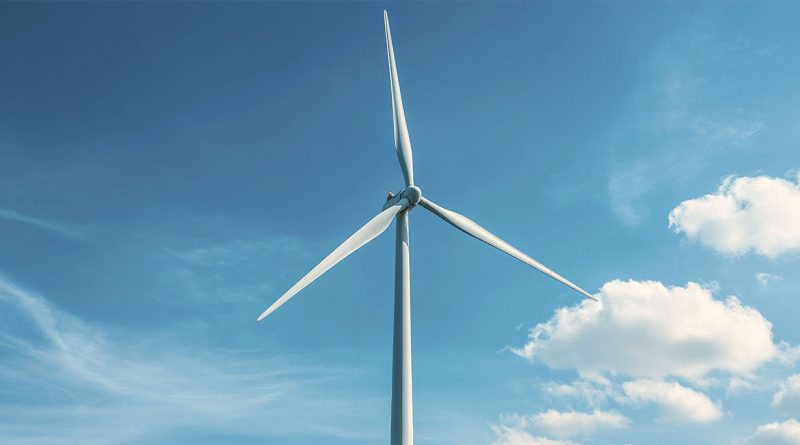China’s Ming Yang to build £1.5 bn wind turbine factory in Scotland
Subscribe to our free newsletter today to keep up to date with the latest construction and civil engineering news.
A Chinese manufacturer is preparing to build the UK’s largest wind turbine facility at a former oil and gas yard in the Highlands, in a move that could reshape the country’s offshore energy supply chain and manufacturing base.
Ming Yang Smart Energy, China’s largest private wind turbine producer, has announced a proposed investment of up to £1.5 billion at the Ardersier green freeport near Inverness. The firm plans to begin production by late 2028, creating as many as 1,500 jobs in a region still in transition from North Sea fossil fuel legacy industries.
If approved, the plant would be one of the most substantial offshore wind infrastructure projects in Western Europe, serving as a key manufacturing hub for turbine components and offshore power technology. The site, previously a McDermott fabrication yard for oil platforms, has been targeted for redevelopment as part of Scotland’s push to lead the UK’s clean energy shift.
Strategic bet on Scottish wind
Ming Yang said it would commit up to £750 million in the project’s first phase, including assembly lines, blade manufacturing and nacelle production. The remaining funds would go toward developing an ecosystem of local suppliers and service firms supporting offshore installations in the North Sea and beyond.
Aman Wang, the company’s UK chief executive, said the goal was to “make the UK a global hub for offshore wind technology,” adding that the firm was fully aligned with the British government’s ambition to become a “clean energy superpower.”
Ardersier’s selection reflects its location and potential scale. Once fully redeveloped, the port could handle the largest next-generation turbine structures, which often exceed 15 megawatts in capacity and require expansive staging and shipping infrastructure. The site also benefits from tax incentives tied to its green freeport status and access to Scottish offshore leasing zones such as ScotWind.
The Scottish government said the investment underlines the growing momentum behind its offshore wind sector, which it hopes will support tens of thousands of jobs over the next two decades. A spokesperson called the decision “a strong vote of confidence” in Scotland’s renewables industry.
Supply chain revival or strategic risk?
Ming Yang’s move could accelerate efforts to localise more of the offshore wind supply chain in Britain, which has long relied on imported turbines and parts. For the civil engineering and manufacturing sectors, the proposal promises a surge in demand for port upgrades, heavy fabrication, logistics and maritime construction.
But the deal has raised concerns in Westminster, where questions persist over Chinese involvement in critical infrastructure. Last year, Conservative MP Nick Timothy called on the government to block the deal, citing concerns over subsidies and “national security implications” tied to foreign ownership of energy assets.
Energy Secretary Michael Shanks said the government was reviewing the proposal carefully and any decision would be “consistent with national security.” He also noted the wider benefits of bringing high-value manufacturing jobs to the UK.
Ming Yang is already active in Europe, with turbines deployed in Germany and Scandinavia, but this would be its first major manufacturing footprint in the UK.
Analysts say the government must weigh the economic benefits against geopolitical considerations. “There’s no doubt this would be a major win for Scotland’s renewables sector,” said energy economist Dr Fiona Mathers of the University of Strathclyde. “But it’s also a test of how Britain handles strategic investment from partners it does not always fully trust.”
Industry eyes timelines and delivery
Construction is expected to begin in 2026, subject to planning and regulatory clearance. Ming Yang said it has been in discussions with both the UK and Scottish governments for more than two years, signalling that detailed planning is already under way.
For the construction sector, the build-out will involve extensive site remediation, foundation works, dockside fabrication areas and transport corridors. Local contractors and infrastructure firms are expected to compete for packages once procurement begins.
Some industry groups have welcomed the announcement as overdue. “The UK has world-leading offshore wind targets, but we’ve lagged in building domestic supply capacity,” said Charlotte Davies, director at the UK Wind Supply Chain Alliance. “This is the sort of project that could tip the balance.”
Still, Davies noted that without guarantees of long-term turbine orders or grid connections, any new facility will face commercial risk. “We’ll be watching to see what procurement commitments follow, especially from major developers active in ScotWind and INTOG rounds.”
Sources:
